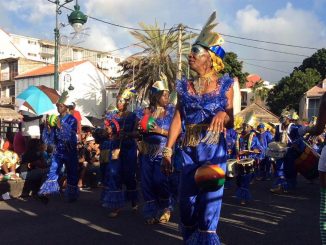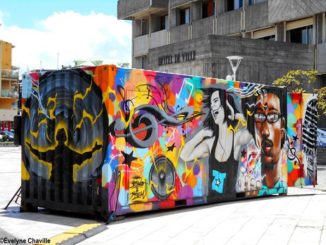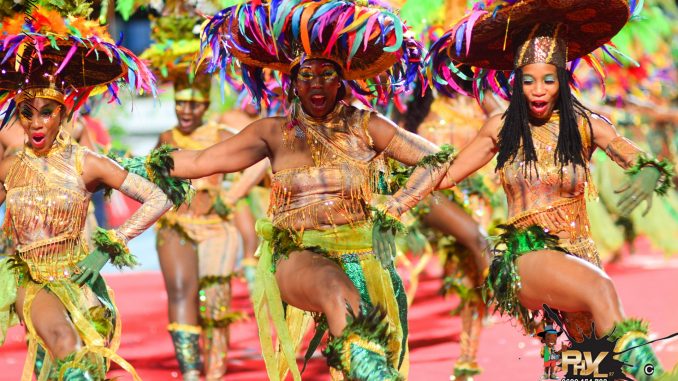
Various groups, musics and musical instruments, songs, dances, costumes, decorations, parades make the beauty of the Guadeloupean carnival which is one of the major popular events of the island and attracts more and more tourists.
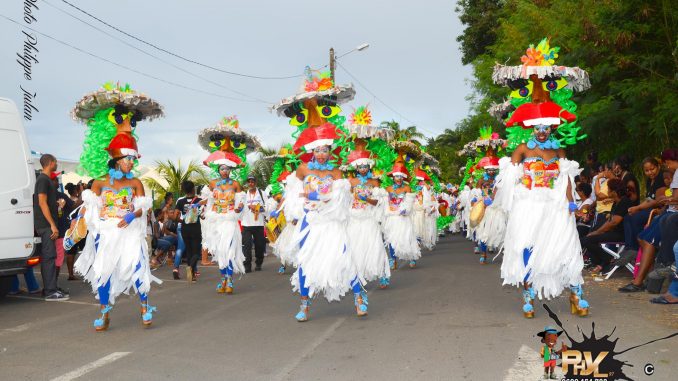
Unquestionably, Carnival in Guadeloupe is very rich. Carnival, a pagan festival, arrives in Guadeloupe in the 17th century with the European settlers. At that time, it is a question of celebrating a lot before fasting during the 40 days of Lent. On that occasion, only some masked balls are organized by white colonists and free Blacks. As for the slaves, they are prohibited from assembling because of the Article 16 of the “Code Noir” promulgated by the King of France, Louis XIV, in 1685.
After the Abolition of slavery in 1848, the new free people seize gradually this tradition and organize “bals Nègres” (Negro balls). Then, this event invades the street.
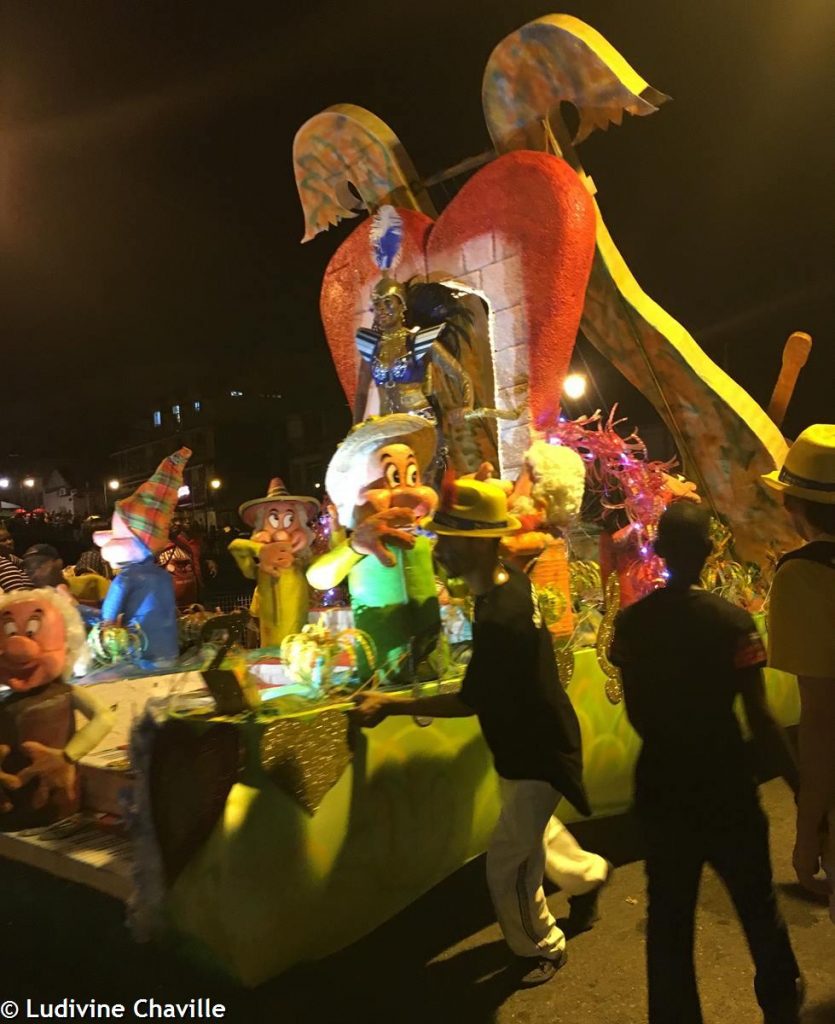
A coordinated schedule
If until the 1960s-1970s, only the wealthiest people take part in the parade on the floats for Mardi Gras (Shrove Tuesday), while the more modest people content themselves with the “mass parade” (vidé, in Creole), nowadays things have changed a lot.
The current carnival is a mixture of these different stages when party and derision are obligatory in society. If the program includes about fifty meetings as early as January, four are essential : “Dimanche Gras” ; “Lundi Gras” ; “Shrove Tuesday” ; “Ash Wednesday.”
On “Dimanche Gras” is organized in the streets of Pointe-à-Pitre a big parade of more than fifty carnival groups from all over the island.
On “Lundi Gras”, two big night-parades are held in Basse-Terre and Saint-François.
On “Shrove Tuesday”, a gigantic parade takes place in the capital, Basse-Terre, with almost all the Guadeloupean carnival groups with their majestic decors and the participation of some invited groups. The king and the queen of carnival also take part in the celebration.
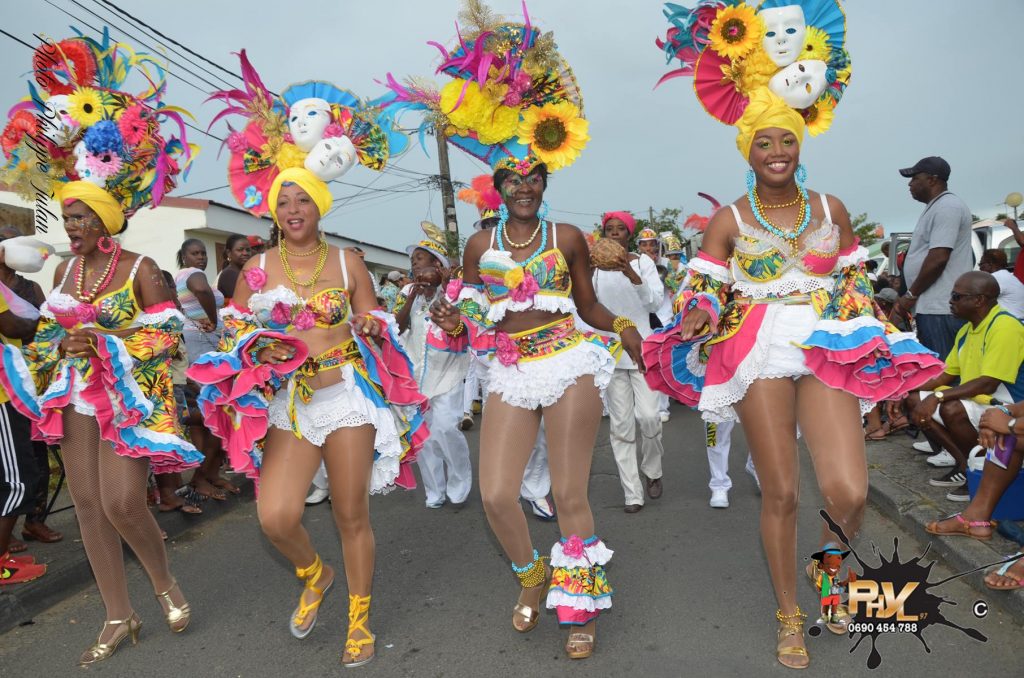
Mid-Lent, a Guadeloupean specificity
During these three days of jubilation, the carnival lovers cover several kilometers singing, dancing and playing music until very late at night. Various contests determine the best music, the best float, the best choreography, the best decor.
“Ash Wednesday” is the last day of the festivities with the great “vidé” (mass parade) usually in black and white as a sign of mourning. The carnival lovers and the crowd of spectators celebrate Vaval’s funeral, the King of Carnival, represented by a puppet (or bwa bwa, en Creole) which is burned at the end of the ceremony. Then, everybody sings in Creole,“Vaval ka kité nou” (“Vaval leaves us”) and some of them pretend to cry.
To these four days, we have to add “Mid-Lent” (20 days after the beginning of Lent) where it is allowed to have a break. This day is a public holiday in Guadeloupe and the carnival lovers (fewer in number) parade in red and black costumes.
During these last thirty years, several carnival groups were founded, others disappeared. Currently, there are in Guadeloupe arround 80 groups which are classified into four categories.
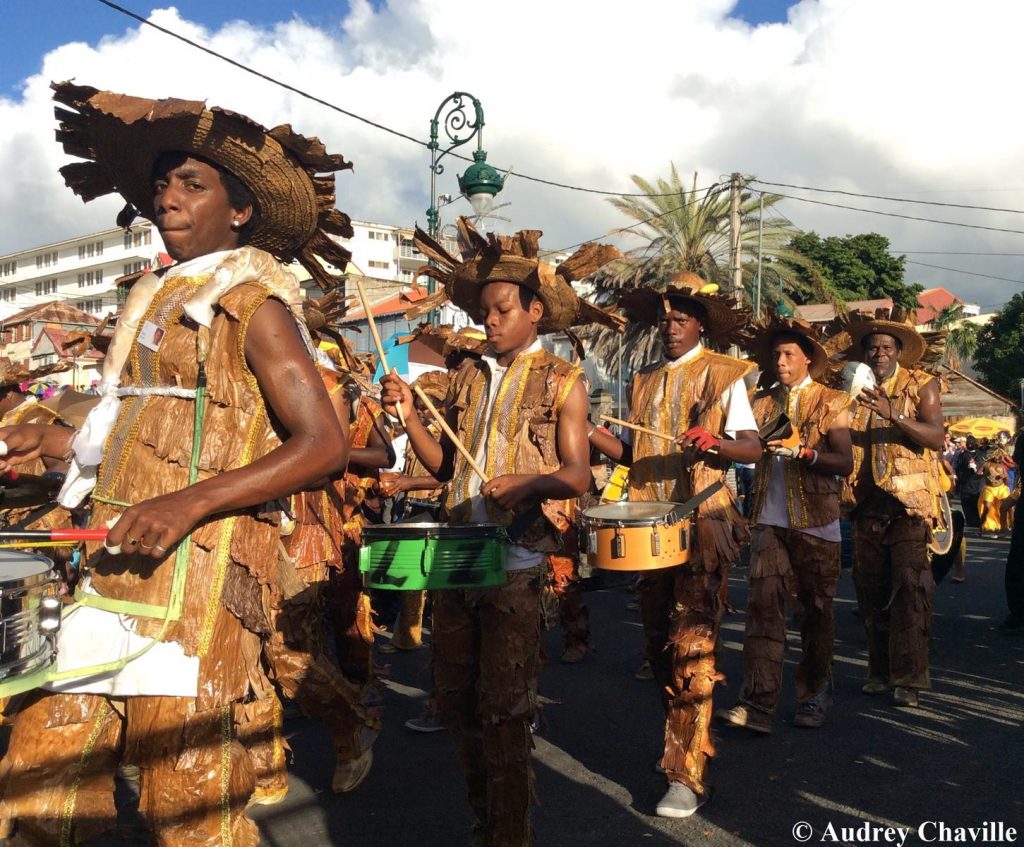
Groups with modern instruments
First, there are “Groups with snare drums” where female dancers and musicians take part in parades by foot and wear costumes with very bright colors, the brass beat out the rhythm, beautiful decorations are presented to the public. These groups are modern. Among the oldest, Magma, Kontak, Toumblack, Waka, Guimbo All Stars…
Then, there are the “Groups with synthesizers” that comprised of one (or two) “synth”, a bass guitar and large loudspeakers put on a pick-up ; the whole is powered by a generator. Female dancers perform frenetic choreographies. The oldest “synth” groups are Mango Dlo, Pikan, Volcan and Ti Bwa.
This type of group reminds the former bands put on big trucks with large loudspeakers that played music during carnival until the 1970s, before the multiplication of groups on foot.
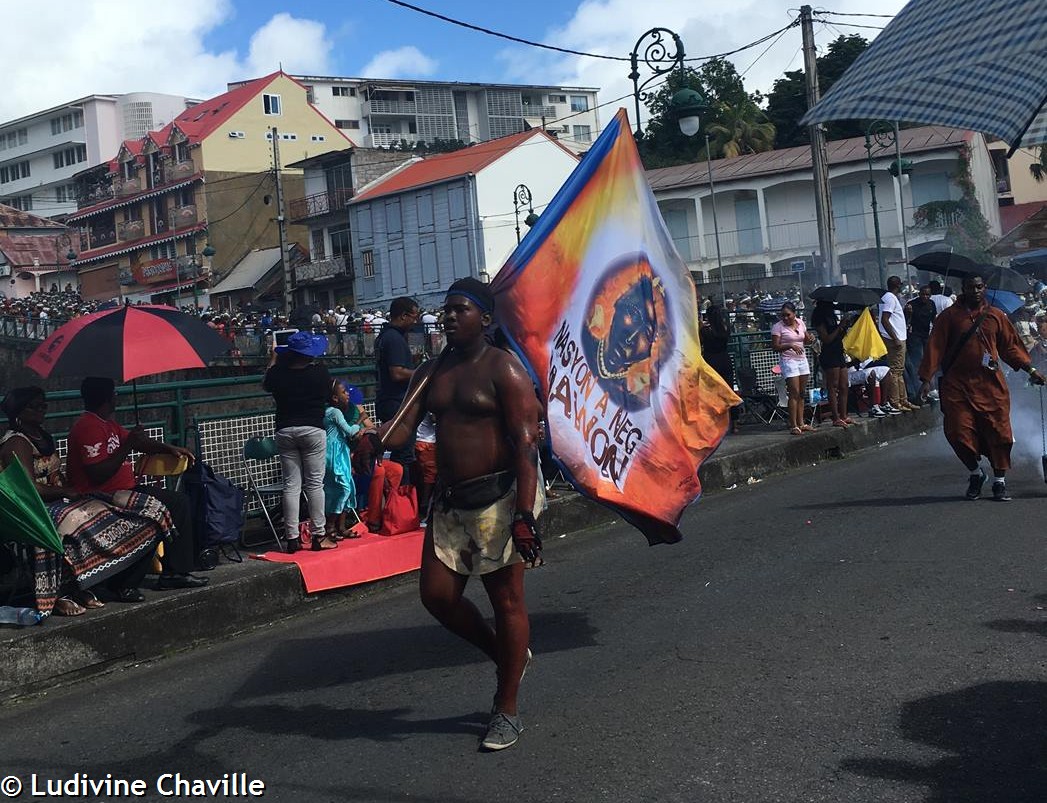
The growing number of traditional groups
In the“Groups with Skin” (gwoup a Po, in Creole), the musicians beat traditional drums which is covered with goat skin to play “Saint-Jean’s music” or “big syrup music”, accompanied by the sound of conch. These carnivalesque groups that claim to be very traditional or even anticolonialist post in front of its parades young members who snap whips in memory of slavery and perfume the air with incense to drive away evil spirits. The parades are made with fast steps, almost military. The first groups of this category are Akiyo (1979) and Voukoum (1988).
Finally, there are the “Ti Mass groups” (little mas) – appeared in the 2000s – which particularly attract young people. The majority of the members wear a gorilla mask and perform a choreography, often based on topical issues (road accidents, drug, violence…). Musicians beat on cans and snare drums. The oldest group is Mass Moul Massif.


